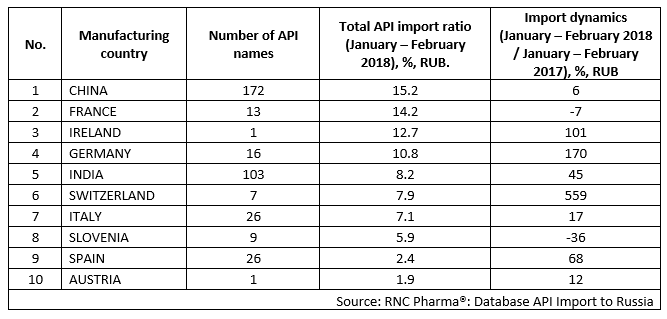Database Update: API Import to Russia (February 2018)
Between January and February 2018, Russia imported 14.9 bln RUB worth of APIs (free circulation prices, VAT included), which is in monetary terms 45% higher than that of the same period of 2017. In physical terms, Russia imported 1,760,000 tons of APIs, which is 9% higher than that of the same period of 2017.
The period follows the 2017 trend, when the API import dynamics were 22% and 5.3% in monetary and physical terms, respectively.
The API import in February 2018 doubled that of February 2017 in monetary terms, which pushed the trend. In February 2018, Russia imported 10.1 bln RUB worth of APIs (free circulation prices, VAT included), which is nearly 900 tons (0.4% lower than that of February 2017), while the dynamics in January 2018 were more than 18%.
In February, the average price was more than twice as high as in January – the price for 1 kg was 11,300 RUB, which is due to the new import list. In particular, Russia imported 261 names of APIs, and nearly half of them (128 names) were not imported in February 2017. The imports of Pneumococcal monovalent polysaccharide conjugates, Perindopril erbumine, Dipyridamolum, and Actovegin showed the best dynamics, with a 2, 7.8, 12, and 3.5 times increase, respectively.

 Рус
Рус




